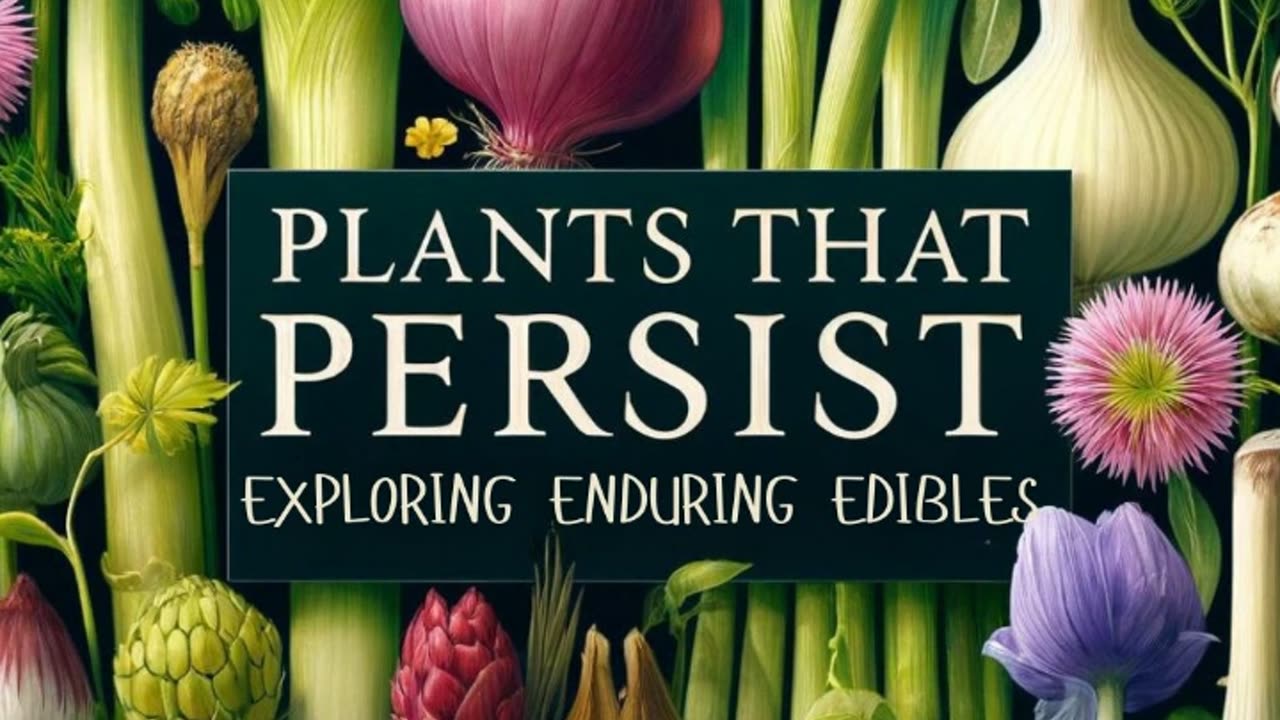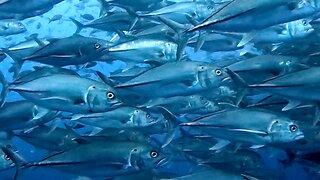Premium Only Content

Plants That Persist: Exploring Enduring Edibles
"Plants That Persist: Exploring Enduring Edibles" is a look into the captivating world of perennial alliums. Join me as I begin a journey through the fascinating characteristics, growth patterns, and harvesting techniques of these resilient plants.
I provide some valuable insights and practical tips for cultivating and enjoying these edibles in your own garden. Growing these food secure varieties will ensure a bountiful harvest of alliums year after year.
This article is very interesting: https://backyardlarder.co.uk/2022/03/perennial-leeks/
Varieties of Perennial Alliums talked about in this episode:
Perennial Leeks:
Delft Leek
Belgium Leek
Babington’s Leek
Elephant Garlic (Allium ampeloprasum)
American Flag Leek
Bulgarian Giant Leek
The Oerprei, or Allium ampeloprasum, is an ancient European leek renowned for its hardiness and ability to grow perennially. This makes it a particularly durable plant in gardens where it can come back year after year without the need for replanting. Known for its robustness, Oerprei is often recognized for its thicker and taller stems compared to regular leeks, and it produces a milder flavor that can enhance a variety of dishes.
Historically, the Oerprei has been cultivated across Europe for centuries, valued not only for its culinary uses but also for its adaptability to various climates and soil conditions. The plant thrives best in well-drained soil with full sun exposure, much like other members of the Allium family. Due to its perennial nature, once established, it requires less maintenance than annual crops, making it a favored choice for food secure and low-maintenance gardening practices.
I am growing King Richard Leeks this year and I believe I picked them as they are the shortest season I had seen at 75 days.
Ramps (Allium tricoccum)
Welsh Onions (Allium fistulosum):
Common Welsh Onion
Red Welsh Onion
Egyptian Walking Onions (Allium × proliferum)
I forgot about the Red Catawissa onions!! I used to grow these in Ontario and have some ordered for the summer! They are a distinctive type of walking onion, valued for both their culinary and ornamental qualities. These onions are unique because they don’t produce traditional flowers; instead, at the top of each stalk, they grow clusters of small onion bulbs, known as bulbils. As these bulbils mature, they become heavy, causing the stalks to bend and eventually touch the ground. When these bulbils make contact with the soil, they take root and grow into new onion plants, a process that gives walking onions their name, as it appears they “walk” across the garden over time.
The Red Catawissa variety stands out with its vibrant red hue, adding a splash of color to the garden. They are perennial, meaning they come back year after year, and are very hardy, thriving in a variety of climates with minimal care. In the kitchen, these onions provide a potent, sharp flavor that enriches dishes that call for a pronounced onion taste. They are a great choice for gardeners looking to add both flavor and visual interest to their edible gardens.
The Egyptian walking onions will be available in mid summer at: https://gardenfaeriebotanicals.ca/product/egyptian-walking-onion-bulbils/
Shallots (Allium cepa var. aggregatum):
French Red Shallot
Dutch Yellow Shallot
Gray Shallot (Griselle)
Frog Leg Shallot
Jersey Shallot
Ed's Red Shallot.
Zebrune Shallot- An heriloom Eschalion, or banana shallot. Has elongated, pink-brown bulbs that have a sweet and delicate flavour. The highly productive plants resist bolting. Good for storage. ( I am growing these.)
Next week we will continue with more. See you in the garden!
I do not know WHY I keep saying Shopify!!! I am sorry...it is Spotify. I guess I enjoy a good Gong Show sometimes!!!
-
 23:12
23:12
Jasmin Laine
17 hours agoPoilievre LOSES PATIENCE—His “Who CARES?” Moment SHOCKED Everyone
20.6K20 -
 6:49
6:49
The Car Guy Online
10 hours ago $1.51 earned2025–2026 Duramax FAILURES Begin! GM’s NEW Engine Nightmare? Silverado, Sierra, Yukon...
2.92K8 -
 8:34
8:34
Millionaire Mentor
17 hours agoTrump FIRES BACK After Mamdani’s SHOCKING Threat To New York City
5.49K9 -
 53:56
53:56
ZeeeMedia
19 hours agoSilicon Valley, Transhumanists & the Book of Revelation ft. Jay Dyer | Daily Pulse Ep 144
6.99K10 -
 1:02:02
1:02:02
A Cigar Hustlers Podcast Every Day
1 day agoEpisode 4 Hustler Every Day Target 10/4, No More Pennies and Gronk Is The Man
3.53K1 -
 3:07
3:07
GreenMan Studio
1 day agoHOW TO NOT SELL OUT IN 2025 W/Greeman Reports
4.05K6 -
 0:43
0:43
WildCreatures
2 days ago $2.38 earnedDiver is swallowed up by a passing bait ball at Darwin Island
4.89K4 -
 1:54
1:54
Damon Imani
3 days agoDamon Left The View SPEECHLESS on Marriage And Government Overreach
5.99K9 -
 4:09
4:09
Memology 101
14 hours ago $0.72 earned"Journalist" REPEATEDLY tries and FAILS to bait John Fetterman into calling Trump an "AUTOCRAT"
4.84K16 -
 58:02
58:02
Dialogue works
2 days ago $5.97 earnedMatthew Hoh: Ukraine’s Army Is COLLAPSING Everywhere!
28.2K18